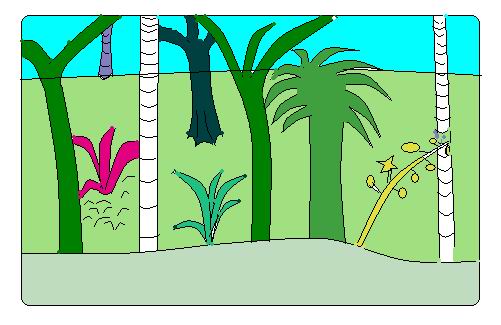Value of biodiversity gets official OK
Readers may recollect a story some months ago – “Living together helps us all grow”. The piece was about how having many species growing together
led to more stable nutrition for all the species, as opposed to less, due to competition. Many species also helped
each one make a better showing against parasites.
Prof David Tilman and others at the University of Minnesota put these ideas about the importance of biodiversity to rigorous test and have demonstrated
with hard data that biodiversity does, indeed help all the participating species flourish and better combat drought our soil degradation. “Ecologists have long suspected that biodiversity affects various aspects of ecosystem functioning, but there has been
great debate among academic researchers because we lacked rigorous experimental tests”, Prof Tilman said in a communication.
Many species cooperate
The way more species help nutrition is that they help even out the rate of extraction of different components of the soil by the plants supported. Thus,
according to the rate of replenishment of the different soil components, by processes like nitrogen fixation,
seepage, bacterial action, etc, the mix of the species supported adjusts itself and
gradually stabilizes. All species are thus assured of steady supply of nutrients. If one species were to multiply faster, the tendency would be slowed down by depletion of the soil and if a population were to go down, abundant
food supply, as other species would not need to compete, would help the population rise again.

In the matter of attack by parasites also, the presence of other species prevents a parasite from taking over all the members of one species. Again,
increase of one species would face increased pressure from parasites, while depletion would result in increased protection by other plants, and hence regeneration.
Put to the test
These ideas of how biodiversity was ‘good’, however, had not been established by hard data of how different species fared when grown along with other
species or by themselves. Prof Tilman and his colleagues have filled the need by a decade-long experiment carried out in the Cedar Creek Natural History Area, Minnesota. Prof Tilman, who is Regents Professor and holds the McKnight Presidential University Chair
in Ecology at the University of Minnesota, is also the Director of the Cedar Creek Natural History Area.
Prof Tilman and colleagues divided a 7 hectare field into 168 plots of 9m x 9m each. The plots were seeded with 1,2,4,8 or 16 different perennial grassland
species – the mix of seeding being repeated at different levels of diversity. The composition of each plot was randomly chosen from 18 perennial plants and the plots were seeded in May 994 and 1995 and data collection continued for 10 years. Strict controls
were ensured of the conditions of growth the plots were burned every year in spring before growth began and the biomass generated was assessed, with controls for statistical rigour, in August.
The study covered both short term and longer term effects of different conditions, of the presence of weeds and of periods of drought. The data collected has established that “greater numbers of plant species lead
to greater temporal stability of an ecosystem’s above-ground plant production…………….Our results indicate that reliable, efficient and sustainable supply of some foods (for example livestock fodder), biofuels and ecosystem services can be enhanced by the use
of biodiversity”, says the report in Nature
[The writer can be contacted at simplescience@gmail.com].